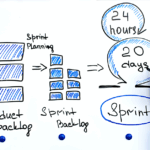Instructional designers, have you ever built a beautifully crafted training program, only to find that employees still fumble in real-world situations? You’re not alone. We’ve all been there. The reality is traditional training doesn’t always align with how and when people actually need help on the job.
That’s why so many instructional design consultants are paying closer attention to a model called The Five Moments of Need. Developed by Dr. Conrad Gottfredson and Bob Mosher, this framework offers a much more practical way to think about supporting learners—not just during a training event, but at every point in their workflow.
Let’s dig into what these five moments are, why they matter, and how you can start using them to create more effective, human-centered learning experiences.
What Are the Five Moments of Need?
The idea is simple: people don’t just need training when they’re brand-new. They need help at several different points in their journey, some of which are often ignored in traditional instructional design.
Here are the five:
- When learning something new.
- When wanting to learn more.
- When trying to apply what they’ve learned.
- When something goes wrong and they need to solve a problem.
- When things change and they need to adjust.
Let’s take a look at each moment with examples and why they matter.
1. The “New” Moment: First-Time Learning
This is where most training teams spend their time, helping people learn something for the first time. It’s the onboarding module, the first-time user training, the full-day workshop when a new system goes live.
These programs tend to be structured, comprehensive, and formal. And they can be effective, especially when someone is totally unfamiliar with a topic. But here’s the catch: most people only stay in the “new” phase for a short time.
Example: An employee starts a new role and takes a 2-hour course on how to navigate the company’s CRM.
This moment definitely matters, but if we stop here, we’re missing a huge part of the learning journey.
Download Your Copy of 7 Key Design Elements of Successful Onboarding Programs
2. The “More” Moment: Expanding Knowledge
Once people have the basics down, they often want to grow deeper in a subject or skill. This second moment is all about building on what they already know. It’s where curiosity kicks in and learners want more context, more nuance, and more advanced techniques.
This is a great place for more targeted training. Think microlearning, elective courses, or advanced practice scenarios.
Example: That same CRM user now wants to learn how to run more complex reports or customize dashboards for their team.
A key here is to avoid overwhelming people in the “new” phase with “more” content that’s not relevant yet. Drip it out. Let learners opt in when they’re ready.
3. The “Apply” Moment: Putting Learning to Work
This is the moment when someone is trying to do the thing they learned. This may be days, weeks, or even months after training.
This is where so much corporate learning falls apart. People forget. Remember the Forgetting Curve? They get nervous. They’re unsure about the exact steps. And if you haven’t given them tools to support that “apply” moment, they’re likely to waste time, make mistakes, or interrupt others for help.
What people really need in this moment is performance support: checklists, tooltips, job aids, short “how-to” videos, and other just-in-time resources.
Example: The CRM user is trying to recall how to tag a lead in the system while on a live sales call.
If your training program doesn’t include “apply” support, it’s time to start building that in.
4. The “Solve” Moment: When Something Breaks
Things don’t always go according to plan. And when people hit roadblocks, they need to troubleshoot fast.
The “solve” moment is different from “apply” because something isn’t working. The steps aren’t producing the expected outcome. The software is throwing an error. Or the client is reacting in a way that wasn’t covered in training.
Too often, employees are left to figure it out alone, call a coworker, or submit a help ticket. But with the right support, they can resolve the issue faster and more independently.
Example: The CRM lead import tool isn’t behaving like it did during training. The employee needs to understand what changed or how to correct it.
For L&D, that might mean creating troubleshooting guides, FAQ libraries, or building decision-tree tools into your platform.
5. The “Change” Moment: When Things Shift
This might be the trickiest of all the moments to handle well, because it’s the one that hits fast and often.
Systems are upgraded. Policies shift. Roles get restructured. Suddenly, what people learned before is either outdated or needs to be adapted.
If your organization is in growth mode (or if you’ve lived through the past five years of constant digital transformation), this moment probably shows up a lot. And if your training team is still rolling out slide decks days after the change, you’re already behind.
Example: Your CRM is redesigned, and the navigation changes. Your users need a quick walk-through – right now.
In this moment, short videos, animated explainers, interactive simulations, and targeted updates win the day.
Download Your Copy of 5 Ways Change Management Consultants Drive Effective New Initiatives
Why This Framework Is So Useful
One of the best things about the Five Moments of Need is that it gives learning and development professionals a more complete lens on learning, not just pre-training, but during and after.
Here’s how it changes your approach:
- You build with performance in mind, not just knowledge transfer.
- You start thinking like a support designer, not just a content developer.
- You create layered learning ecosystems, not one-and-done courses.
- You extend the shelf life of your training, because it’s part of a continuous support plan.
This model doesn’t replace instructional design models like ADDIE or SAM. It complements them. Think of it as a mindset shift that helps you map learning assets to the real world.
How to Start Applying the Five Moments of Need
Getting started doesn’t mean rebuilding your entire L&D function. Here are a few quick wins:
- Audit your current content. Which moments are you serving well? Where are the gaps?
- Talk to your learners. Ask them when they struggle most. You’ll hear a lot about “apply,” “solve,” and “change.”
- Collaborate with frontline managers. They’ll give you great insights into real-world challenges.
- Pilot a performance support tool. Try a simple job aid or embedded tooltip and measure the impact.
- Plan for change. Design a rapid response process for updates to tools or policies, so you’re not always playing catch-up.
Final Thoughts
In L&D, we’ve traditionally focused on content: what people need to know and how to teach it. But the Five Moments of Need asks a different question: When do people need us most?
That shift, from knowledge-first to need-first, can transform the way your organization learns, adapts, and performs.
If you’re ready to move beyond the course catalog and start designing support for real-life challenges, the Five Moments of Need is a great place to start.
Download Your Copy of What Skills Do Learning Leaders Value Most in 2025?
Ready to Work with Us?
Does your L&D team have more projects than people? TrainingPros has been named a Top 20 Staffing Company internationally by Training Industry, and recognized as a Smartchoice® Preferred Provider by Brandon Hall Group for 2025. We’re also proud to be named a Champion of Learning by the Association for Talent Development (ATD)—an international honor that reflects our dedication to excellence in corporate learning. These accolades underscore TrainingPros’ unwavering commitment to delivering high-quality, tailored training solutions.
If your projects need instructional design consultants, eLearning developers, or other L&D consultants for your custom content projects, reach out to one of our industry-expert relationship managers today.
When you have more projects than people™, let TrainingPros find the right consultant to start your project with confidence. Schedule a consultation today.
- 1share
- LinkedIn0
- Twitter0
- Facebook0
- Love This1











